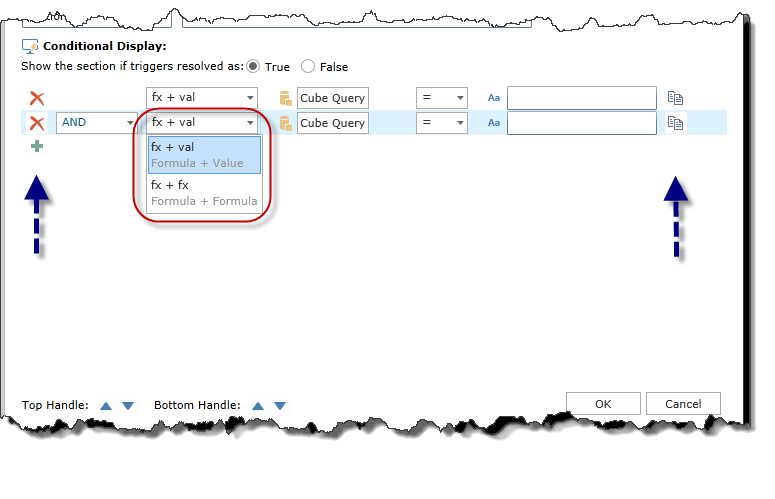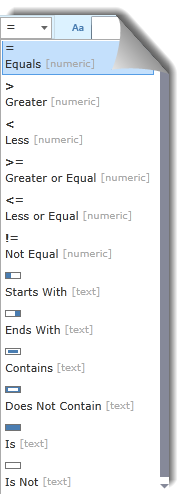Sections - Conditional Content
In the Publication designer users have the ability to group different parts of the document template into "sections". Sections allow users to conditionally display different parts of the content in rendered reports using triggers.

NOTE: Section logic may or may not need to be modulated based on the underlying data.

Section functionality is found on the Insert Tab in Publications:
New Section – Create a custom section with triggers that will display or hide that section at runtime.
Remove section – Delete the created section and its corresponding triggers.
NOTE: When you remove a section, only the sectional conditions will be removed, not the data that was included in the section.
Previous –Move to the previous section.
Next –Move to the next section.
Show/Hide Section –Select whether to show or hide the sections from view.
NOTE: This is not a remove option, hidden sections will be displayed in the final publication.
Setting Conditions
To set the condition or trigger for the section, you need to click on the section button (as indicated by the red arrow) in the left-hand corner of the section panel.
This will open the Section Trigger Editor which has three panels:.

Meta Data (red highlight)
Provide a name for the section and an optional description.

- Determine whether the section is displayed or hidden by the conditional triggers when the conditions are resolved to true or false.
- Click on the “Add trigger” button to insert a new condition.
- For each trigger choose a formulation type combination from the drop-down menu. These are used on each side of the trigger equation that needs to resolve to true or false.
There are two kinds of formulation types:
- Fx - Dynamically rendered values derived from queries. When inserting a dynamically rendered value, the icon of a “Model Query” will be displayed. When you click on the icon, it will take you into the Dynamic Editor to render values from query results. Click here for further information in how to create Dynamic Text.
- Val – Value: You can inject a static value which can be either numeric or textual.
Next, define the comparison operator between each side of the trigger equation. There are two types of operators:

- Numeric: e.g. equals, greater than, less than, not equal etc.
- Textual: e.g. starts with, contains, does not contain, is, is not, etc.
Creating Multiple Trigger Conditions
- The plus icon at the beginning of the formula allows you to add another trigger condition.
- The copy icon at the end of the formula allows you to copy the current condition and add another trigger condition.
When you have multiple trigger conditions, you will be prompted for the logical operator that will be used to determine the result of the condition: Choose the “And” or “Or”.
When there are multiple triggers, the equation will resolve to true or false overall to determine whether the section conditions are met or not.
Click the X icon at the left corner of the formula to delete the trigger.
Section Layout
When you create a section, there is a purple highlighted area with a darker purple vertical line on the left-hand side. Adjust the size of the section by toggling the arrows for each “handle”.
- Top Handle – will move the top part of the section up or down.
- Bottom Handle – will move the bottom part of the section up or down.
Entire sections will be highlighted in purple when the cursor is positioned inside the section and sections are set to “show”.
Home |
Table of Contents |
Index |
User Community
Pyramid Analytics © 2011-2022

